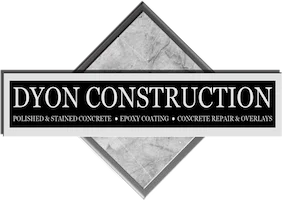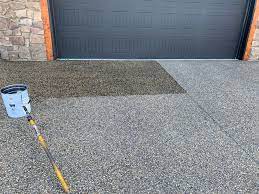Introduction
Concrete floors are renowned for their durability and versatility, making them a popular choice for both residential and commercial spaces. However, despite their robust nature, concrete floors are not impervious to wear and tear. This is where concrete sealing comes into play. Sealing concrete floors is a crucial process that not only enhances their appearance but also extends their lifespan. Understanding the importance of concrete sealing and the best practices involved can help maintain the integrity and beauty of your floors for years to come.
Benefits of Concrete Sealing
Concrete sealing offers a multitude of benefits that significantly improve the performance and aesthetics of your floors. One of the primary advantages is protection. Sealing provides a barrier against moisture, chemicals, and stains, preventing them from penetrating the concrete surface. This is particularly important in areas prone to spills or exposure to harsh chemicals.
Additionally, sealed concrete is much easier to clean and maintain. The smooth, non-porous surface created by the sealant repels dust, dirt, and grime, making routine cleaning a breeze. This can be especially beneficial in high-traffic areas where cleanliness is paramount.
Another significant benefit is enhanced durability. Sealing helps to prevent cracks, chips, and other forms of damage caused by everyday wear and tear. It also protects against the detrimental effects of freeze-thaw cycles, which can cause concrete to expand and contract, leading to structural damage.
Moreover, sealing concrete can enhance its appearance. Various sealants are available that can add a glossy finish or enhance the color of the concrete, providing a more polished and attractive look. This is particularly advantageous for decorative concrete surfaces, such as stamped or stained floors.
Types of Sealants
Choosing the right sealant is essential to achieving the desired level of protection and aesthetic appeal. There are several types of sealants available, each with unique properties and applications.
Penetrating Sealants
Penetrating sealants, such as silanes, siloxanes, and siliconates, are designed to soak into the concrete surface, providing deep-seated protection. These sealants are excellent for protecting against moisture and de-icing salts, making them ideal for exterior applications.
Acrylic Sealants
Acrylic sealants are versatile and affordable, providing a thin, protective film on the concrete surface. They are available in both water-based and solvent-based formulations. Acrylic sealants are perfect for enhancing the appearance of decorative concrete, as they can add a glossy finish and enrich the color.
Epoxy Sealants
Epoxy sealants are known for their exceptional durability and chemical resistance. They create a thick, hard layer on the concrete surface, making them suitable for industrial floors, garages, and other high-traffic areas. However, they can be slippery when wet, so anti-slip additives are often necessary.
Polyurethane Sealants
Polyurethane sealants offer superior abrasion resistance and UV stability. They are flexible and can withstand heavy traffic and impacts. These sealants are often used in commercial and industrial settings where long-lasting protection is required.
Application Process
The application process for concrete sealants involves several critical steps to ensure optimal adhesion and performance.
Surface Preparation
Proper surface preparation is crucial for a successful sealant application. Begin by thoroughly cleaning the concrete surface to remove any dirt, grease, or existing sealants. This can be achieved using a pressure washer or specialized concrete cleaner. For stubborn stains, a degreaser may be necessary.
Repairing Damage
Inspect the concrete for any cracks or holes and repair them using a suitable concrete patching compound. Ensuring a smooth, even surface is essential for the sealant to adhere properly.
Applying the Sealant
Once the surface is clean and dry, apply the sealant according to the manufacturer’s instructions. Use a roller or sprayer for even coverage, and work in small sections to prevent the sealant from drying too quickly. For best results, apply multiple thin coats, allowing adequate drying time between each layer.
Curing
Allow the sealant to cure completely before using the floor. The curing time can vary depending on the type of sealant and environmental conditions, but it typically ranges from 24 to 72 hours. During this period, keep the area free from dust and debris.
Maintenance and Longevity
Maintaining sealed concrete floors is relatively simple, but it is essential to follow some best practices to maximize their longevity. Regular cleaning with a mild detergent and water will keep the surface looking pristine. Avoid using harsh chemicals or abrasive cleaners that can damage the sealant.
Periodically inspect the floor for signs of wear or damage. High-traffic areas may require reapplication of the sealant every few years to maintain optimal protection. Promptly address any cracks or chips to prevent further damage.
Common Mistakes to Avoid
Several common mistakes can compromise the effectiveness of concrete sealing. Avoiding these pitfalls will ensure a successful and long-lasting result.
Inadequate Surface Preparation
Skipping or skimping on surface preparation can lead to poor adhesion and reduced durability of the sealant. Always ensure the surface is thoroughly cleaned and any damage is repaired before applying the sealant.
Applying Sealant in Adverse Conditions
Temperature and humidity can significantly affect the curing process. Avoid applying sealant in extreme temperatures or high humidity, as this can lead to bubbling, peeling, or uneven coverage.
Over-application
Applying too much sealant can result in a thick, uneven layer that may not cure properly. Follow the manufacturer’s recommendations for the correct amount and method of application.
Conclusion
Concrete sealing is an essential practice for maintaining the integrity and appearance of your floors. By protecting against moisture, stains, and wear, sealants extend the lifespan of concrete surfaces and enhance their aesthetic appeal. Understanding the different types of sealants and the correct application process is crucial for achieving the best results. With proper maintenance and attention to detail, sealed concrete floors can remain durable and beautiful for many years, providing a reliable foundation for any space.

